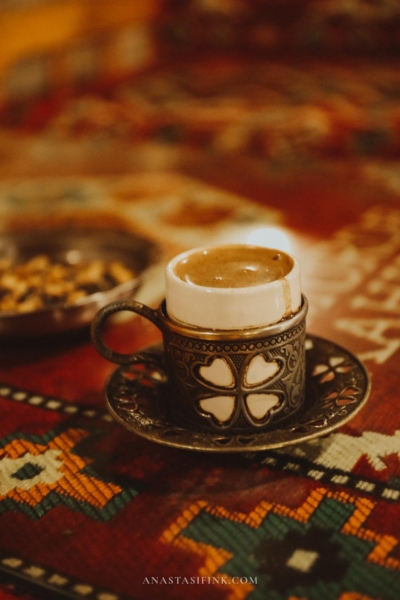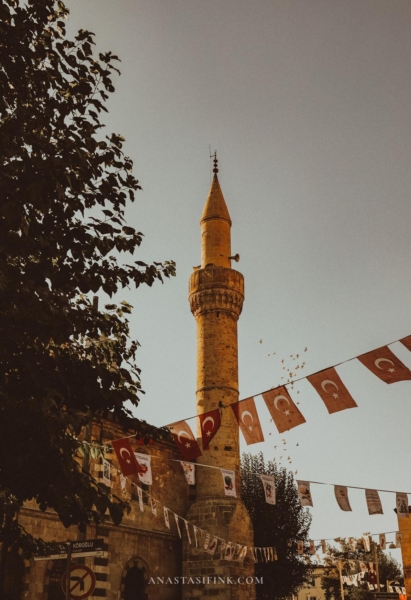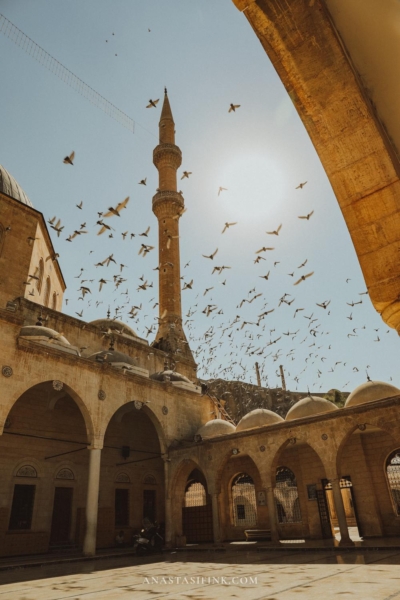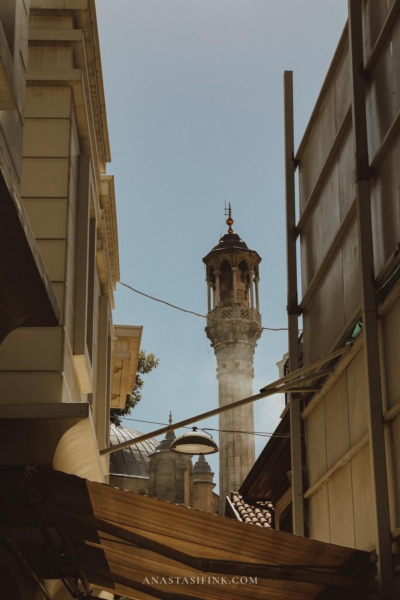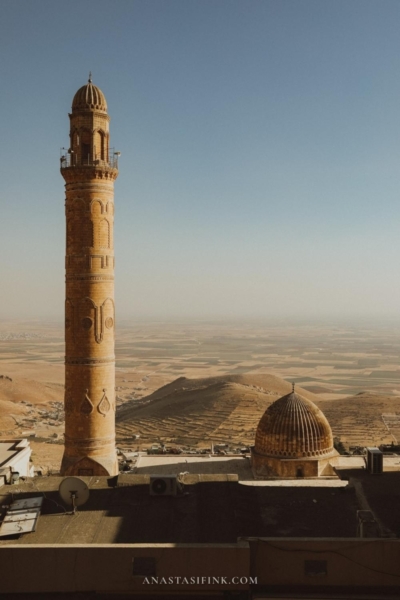Mevlana Museum: Rumi’s Tomb, Visitor Tips, and Travel Guide
The Mevlana Museum in Konya is one of the most visited attractions in Turkey among locals. Despite being far from Istanbul, Antalya, and other traditional foreign tourist hotspots, I recommend everyone make the journey to Konya to see this amazing place. On this page, you will find detailed information about the museum, Rumi’s mausoleum, and tips for visiting this Sufi landmark.

About the Mevlana Museum
The Mevlana Museum is a state museum and the mausoleum of the Persian Sufi poet Jalaladdin Muhammad Rumi, located in the Turkish city of Konya.
This prominent Sufi poet was born on September 30, 1207, in Vakhsh, modern-day Tajikistan, and died on December 17, 1273, in Konya, modern-day Turkey.
The Mevlana Museum houses the poet’s tomb, which is why the museum complex is also known as the Mausoleum of Rumi, but the mausoleum is just one part of the complex.
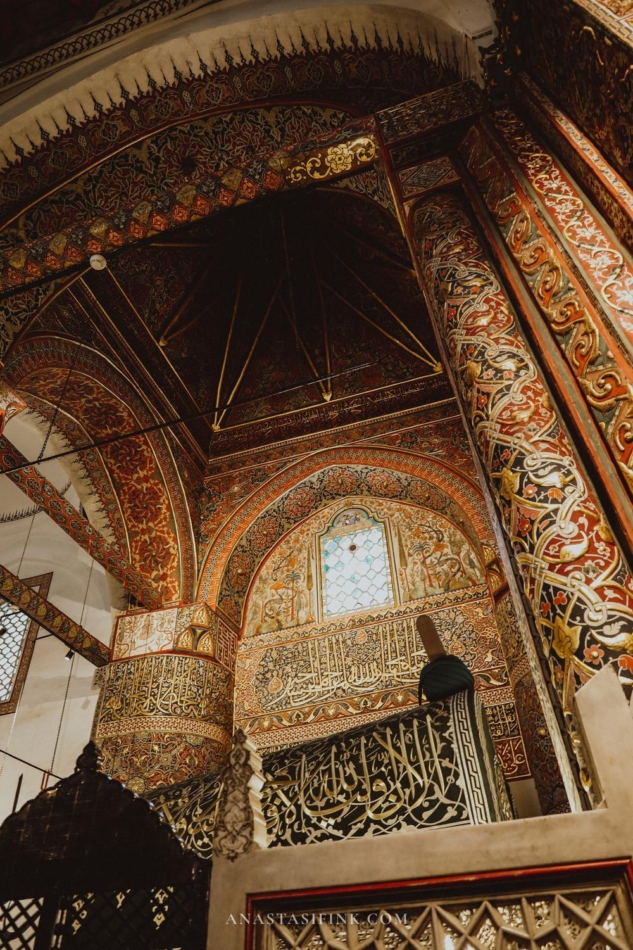
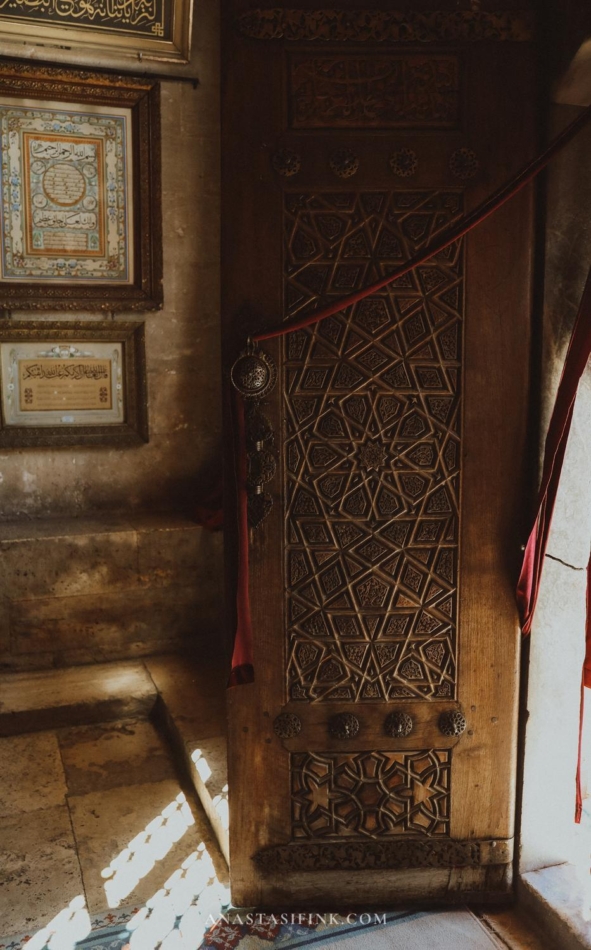
The mausoleum over Rumi’s grave was built in 1274 by Rumi’s successor, Husamettin Chelebi. Historical records show that a small building was erected next to the mausoleum, but it has not survived to this day. However, the turquoise-colored conical dome above Rumi’s tomb, built in 1396, remains stunningly beautiful:
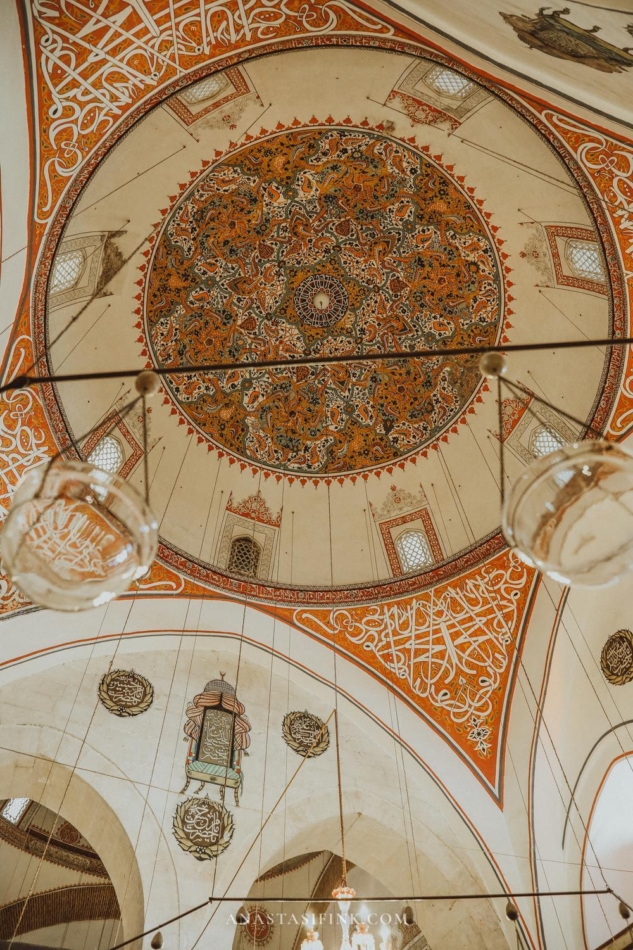
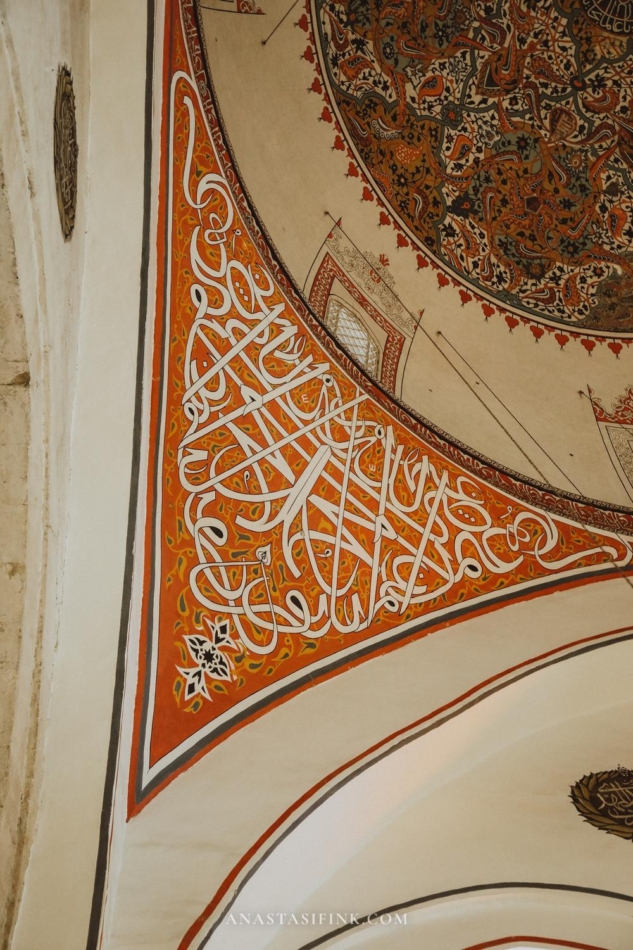
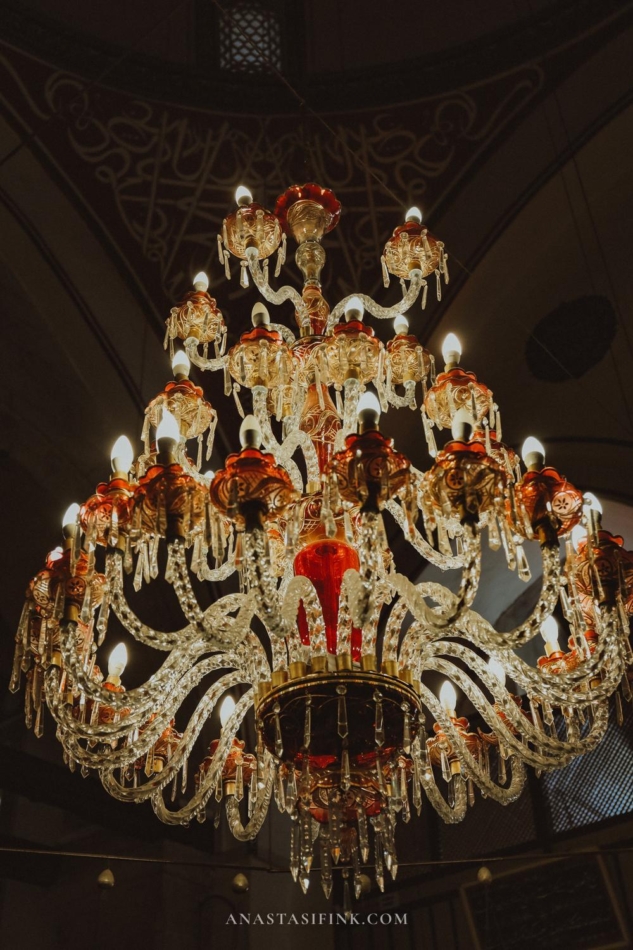
Other buildings in the complex were constructed later. For instance, the museum halls are located in dervish lodgings built between the 14th and 16th centuries.
Several years ago, the museum underwent a comprehensive renovation, but most of the rooms were preserved in their original state. Another fascinating aspect is that the complex has a hall for the “Sema” or “Sama” ritual – the mesmerizing whirling dance of the dervishes – that has been preserved since the 15th century:
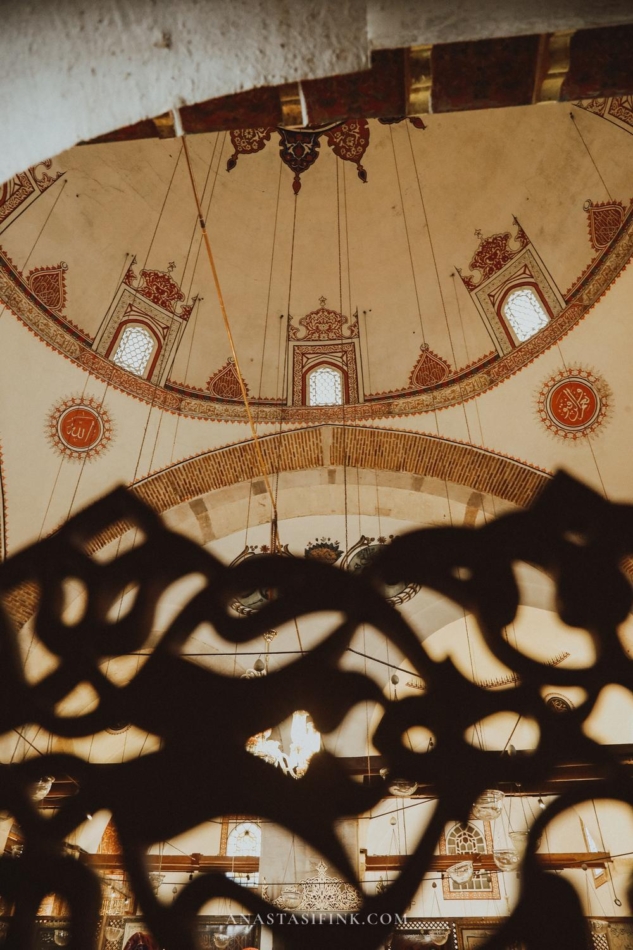

At the Mevlana Museum, I learned an interesting fact – the Sufi order was completely banned in Turkey from 1925 to 1957, and with it, the Sema ritual was also banned. Today, the Sufi order in Turkey officially continues its work, and the Sema ritual is openly performed. To see the dervish dance, you don’t even need to go to Konya, as the ritual is performed in Istanbul, Antalya, and other cities, sometimes even in shopping malls.

You can learn more about the dervishes on this page. If you want to see the dervish dance at the Mevlana Museum, you should visit on weekends, as the ritual is performed in the museum complex on Saturdays.
Thanks to donations from the Ottoman Sultan Mehmed the Conqueror, also known as Mehmed Fatih, a small mosque was built on the Mevlana grounds in the 15th century. Nearby, the larger Selimiye Mosque (Selimiye Camii) was built in 1567, which today is also a landmark of Konya:
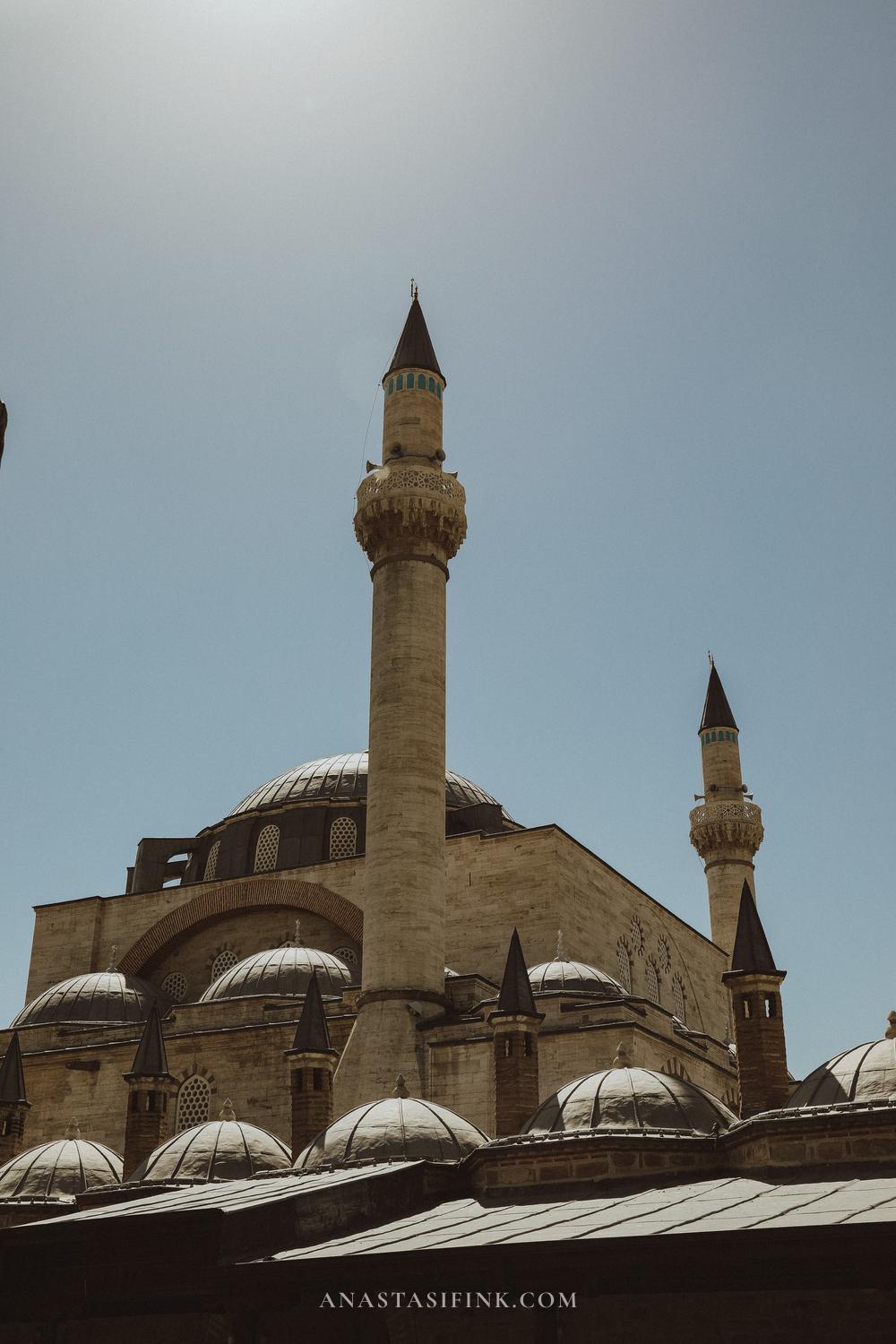
Apart from Rumi’s mausoleum, the Sema hall, and the mosque, there are other interesting places in the museum complex:
- Dervish cells
- Ablution fountain
- Hurrem Pasha’s tomb and other tombs
- Chelebi House
- And more
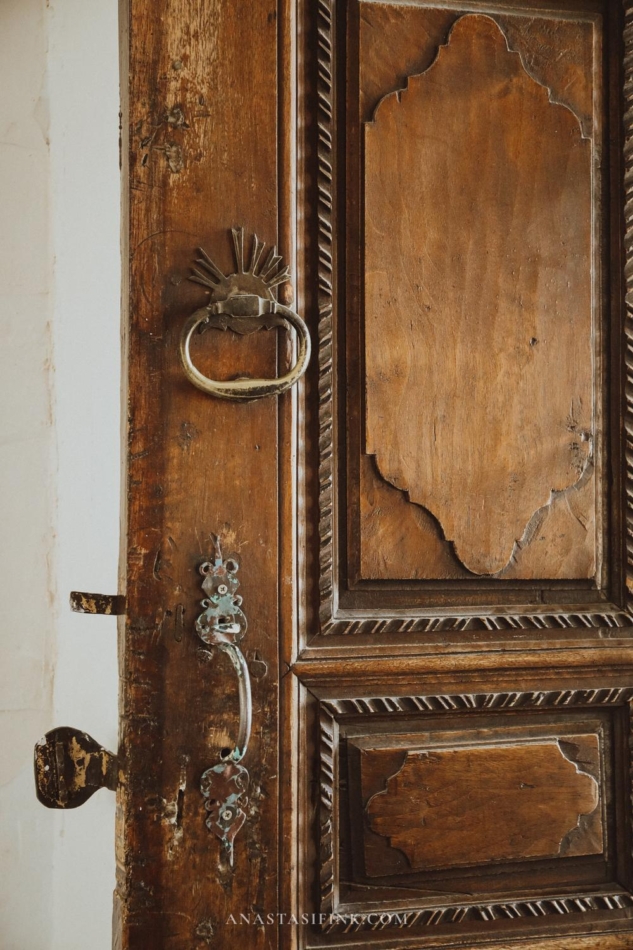
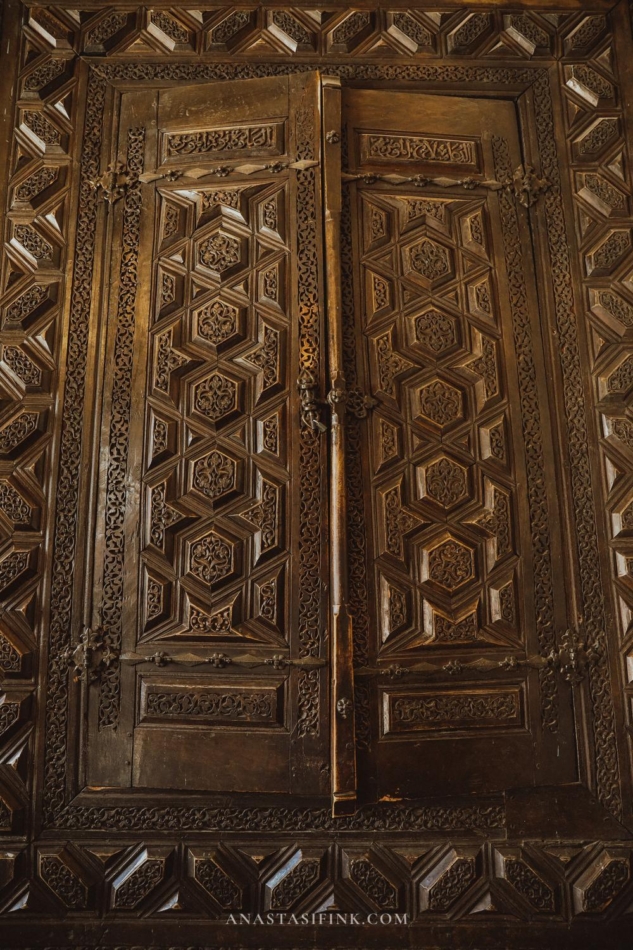
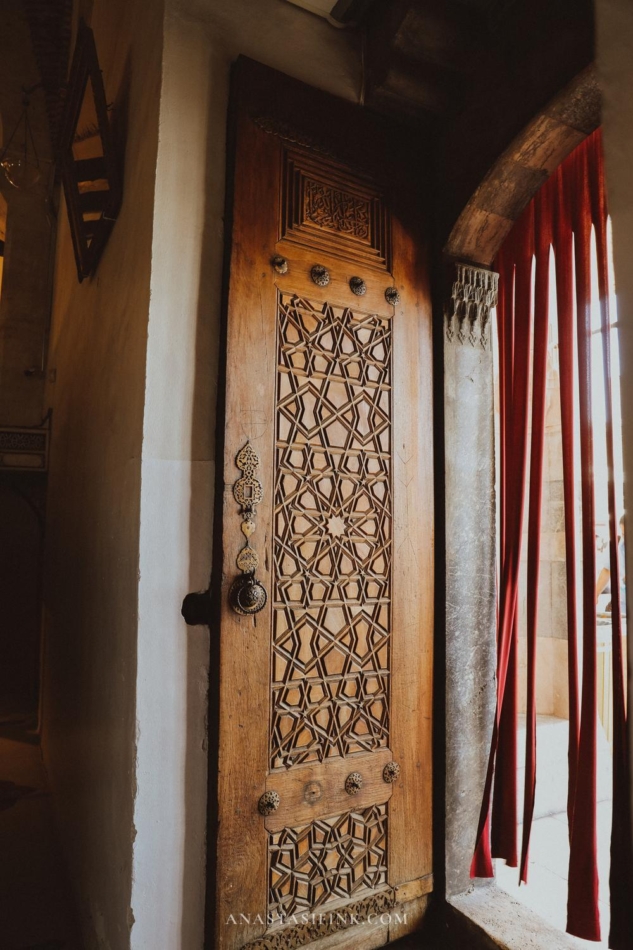
Ornate Antique Doors at Mevlana Museum
As a great lover of antique exhibits, especially doors, I was particularly captivated by the beautiful ornate doors at the Mevlana Museum. These historic doors are adorned with intricate carvings and delicate patterns that showcase the incredible craftsmanship of the past. Each door is a masterpiece, reflecting the rich cultural heritage and artistic traditions of the time. Walking through the museum, the doors not only serve as functional pieces but also as stunning works of art, offering a glimpse into the history and beauty of the Mevlana Museum.
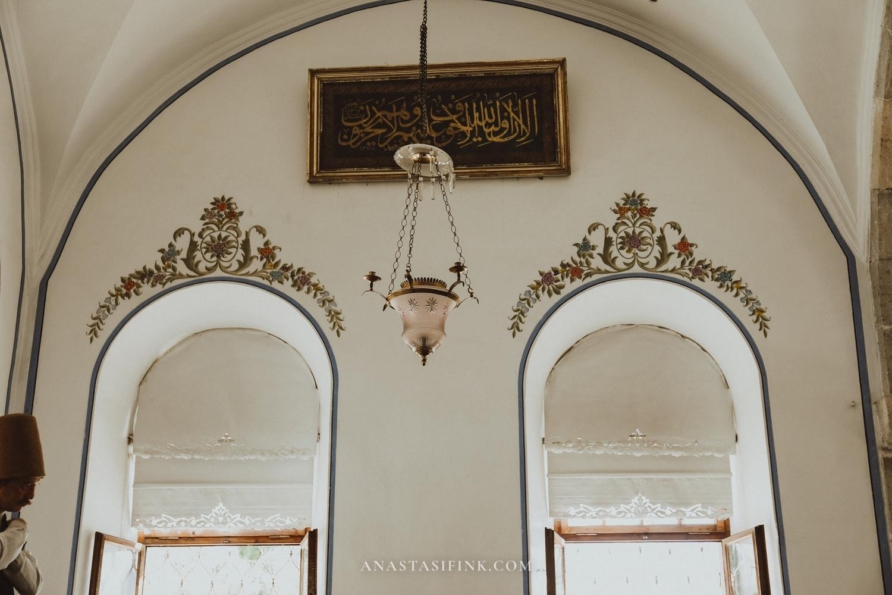
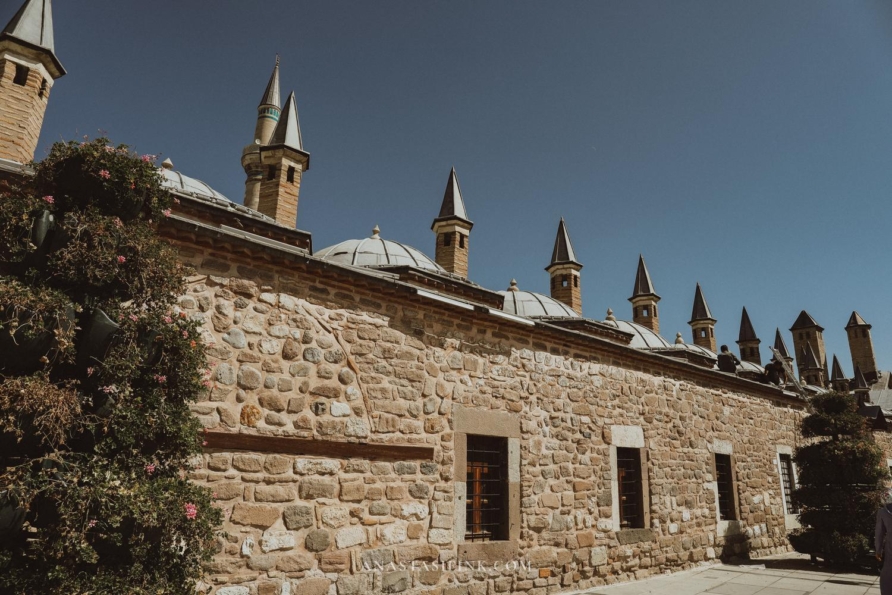
Map of the Museum
I entered the complex through the Chelebi Gate, where you can get free brochures with a map at the entrance. I’m not sure if they are available at other entrances, so I’m sharing the Mevlana Museum map with all the main attractions:

In front of the museum is a large park, the “Rose Garden,” where you can relax after visiting the museum complex.
Ticket Prices
Ataturk, the first president of the Turkish Republic, made the Mevlana Museum free in 1926. Since then, entry to all premises has been completely free for both Turks and foreigners. No museum card or other tricks for free entry are required, and there is no ticket office.
Opening Hours
The museum has two schedules – summer and winter:
| Schedule | Opening | Closing |
|---|---|---|
| Summer | 9:00 AM | 7:00 PM |
| Winter | 9:00 AM | 5:00 PM |
I couldn’t find out exactly when one schedule changes to the other. Even museum representatives couldn’t answer this, and there’s no information about the schedule change on the official museum page, so in spring and autumn, it’s safer to follow the winter schedule.
A crucial detail – entry to the complex stops about 20-30 minutes before closing time. There’s no point in coming so late as you won’t have time to see anything, but, for example, in winter, after 4:40 PM, you won’t be allowed inside even if you only want to take a quick look. At closing time, museum staff start rushing everyone out so that by closing time, no one remains inside.
You should plan at least 2 hours to visit the museum, and with a leisurely stroll, visiting all the attractions and the souvenir shop will take 3-4 hours.
I was lucky there weren’t many people, but I read in reviews that there can be real crowds, especially during holidays and public vacations when Turks are off. For example, during Ramadan or Eid al-Adha. In such cases, plan more time for your visit or schedule your trip outside of Turkish holidays.


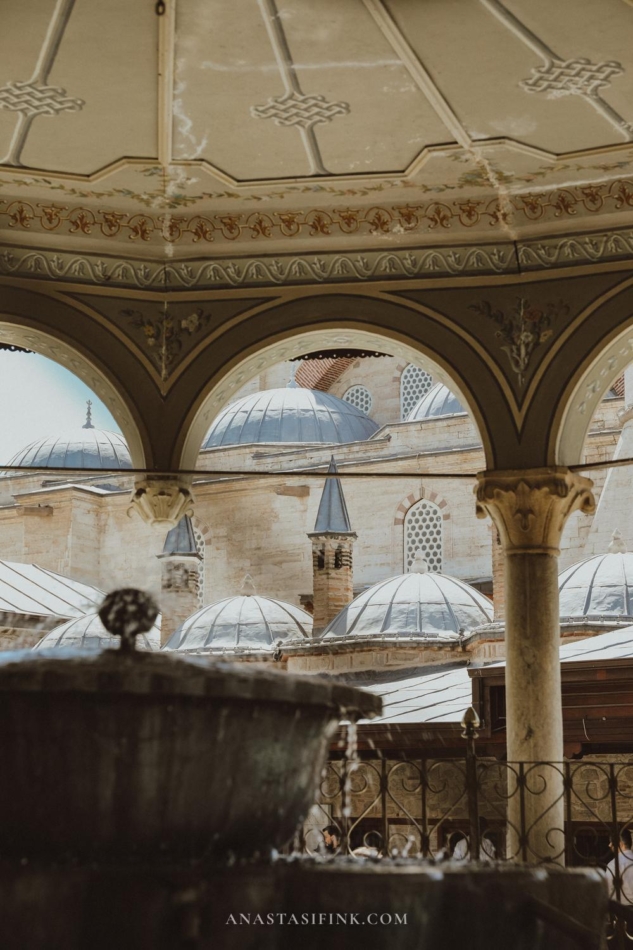
Location
The Mevlana Museum is located in the city of Konya in central Turkey:
The exact address of the museum is: Aziziye, Mevlana Cd. No:1, 42030 Karatay/Konya.
Konya is a large city in central Anatolia, located at the following distances from popular tourist cities:
- From Istanbul – 700 kilometers
- From Antalya – 270 kilometers
- From Ankara – 270 kilometers
- From Cappadocia – 230 kilometers
If you just type “Mevlana” on maps, you may not find the museum. This is a popular name for places all over Turkey – there are “Mevlana” locations in Istanbul, Antalya, Izmir, and other cities. But the museum is only in Konya, so for navigation, use the full Turkish name “Mevlana Müzesi” or use this point on the map.
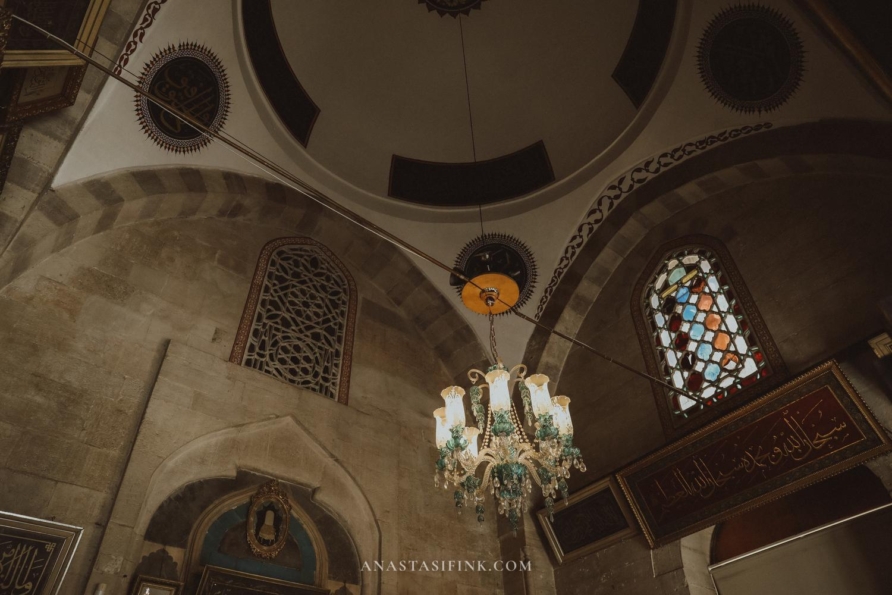
Tips for Visiting the Mevlana Museum in Konya
Visiting Mevlana in Konya is suitable for most tourists, and you can come here with children. The complex’s territory without the Rose Garden is relatively small, making it suitable for those who don’t like long walks.
There are toilets and a small shop on the premises, but if you get hungry, you can eat outside the complex – there are many local eateries around the museum. I recommend the Mevlevi Sofrası Restaurant. I chose the place based only on reviews on maps, and the Google Maps recommendations didn’t disappoint – it was really delicious and reasonably priced. You can find it very easily – use this point or navigate the map:
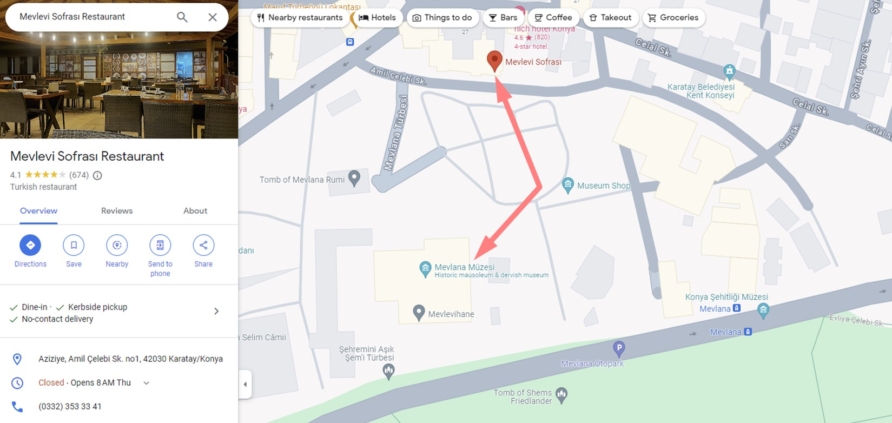
Most visitors to the Mevlana Museum are Turks. I had the impression that the museum staff are not used to foreign tourists and speak poor English, although some signs are in English. This adds a certain charm, but I recommend taking an audio guide or at least reading additional information about the exhibits on the Internet.
The Mevlana Museum is not just an interesting place to visit, it is a significant historical site. Your visit will be more enriching if you learn more about Sufis, dervishes, and the work of Jalaladdin Rumi.
For example, during my visit, I learned that the poet Jalaladdin Rumi stands in significance alongside the renowned Sufi poet Omar Khayyam. While many of Rumi’s works, including the Masnavi, have been translated into English and he is widely celebrated, there are still numerous pieces available only in the original Persian. Similarly, although Omar Khayyam is well-known in English, particularly for his Rubaiyat, other works of his might not be as extensively translated or as widely recognized.
I also learned another interesting fact – in 2007, UNESCO declared the 800th anniversary of Rumi’s birth the Year of Mevlana worldwide, giving the Sufi order a boost globally.
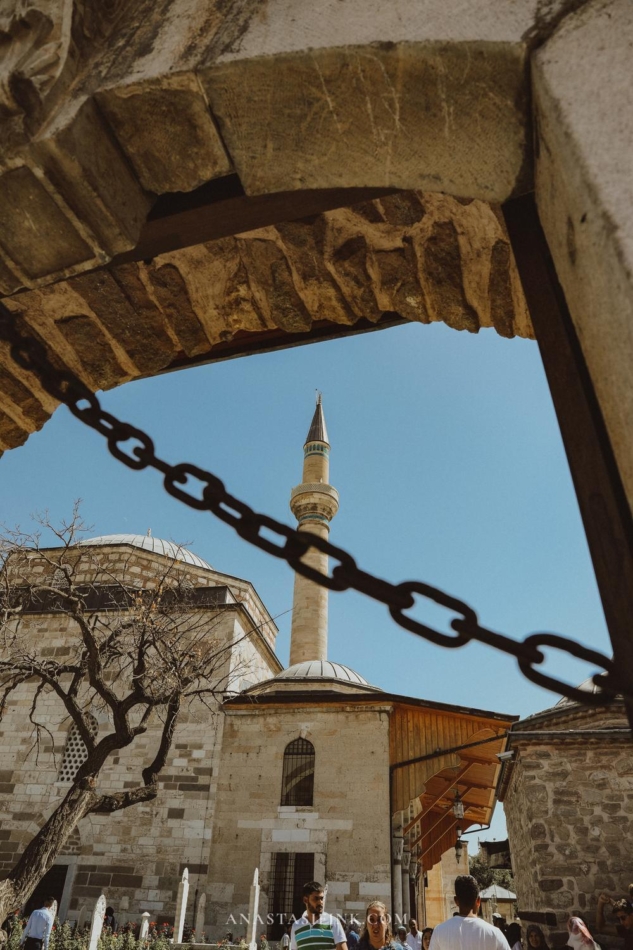
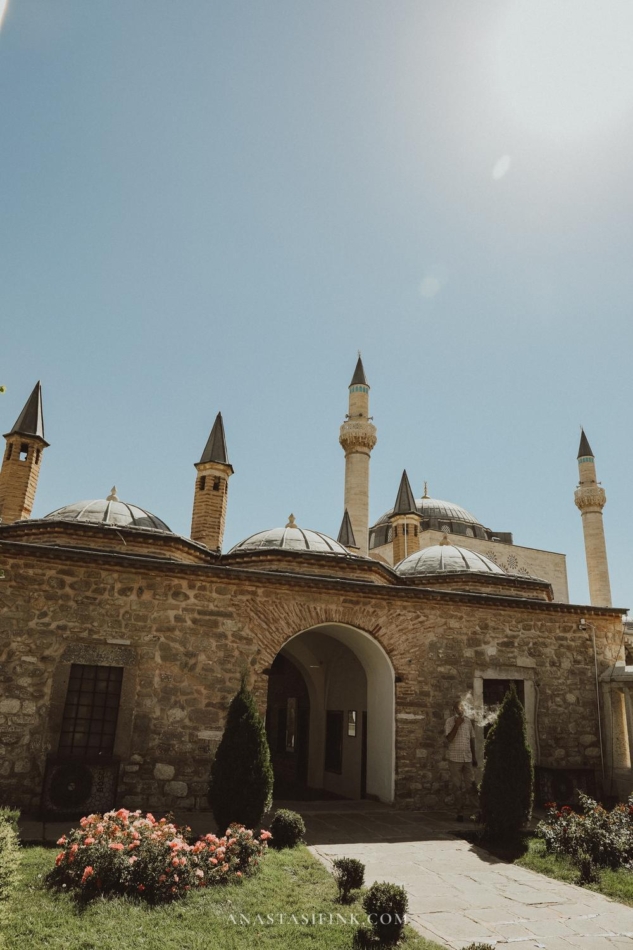
The Mevlana Museum or Rumi is not the only reason to visit Konya. If you have already traveled hundreds of kilometers and found yourself away from the classic tourist spots, I recommend staying in the city for at least a day to explore other attractions.
Konya is very different from other cities in Turkey. It is home to the most religious people in the country, and Konya is considered Turkey’s unofficial “religious capital.” In the Mevlana Museum, you will also see ancient copies of the Quran – the holy scripture, and other Islamic attributes. Therefore, a visit to this city can open up Turkey and Islam for you in a new way.

